We had a long journey, so the Gafcon-tiki tour was up at 4:30. It being Anzac day, we held an impromptu dawn service, with Dominic Steele leading in prayer. Then off to the diocese of Mara’s Mugumu Safe House for girls and young women.
As the bus pulled in we could see there were a lot of people there – some Gafcon-tikers had been worried everyone would away on break. I was struck by the number of children greetimg us..
The safe house came about when an Anglican Vicar sheltered a young girl fleeing Female Genital Mutilation. This is a significant issue in the Mara region with some statistics showing that 32% of women aged between 15 and 49 in that area have undergone FGM. Since starting in 2015, the centre has protected over 500 girls and young women. 480 were successfully returned to their homes.
Before a girl or young woman can go back home there has to be a reconcilation session between the centre and the parents. If unsuccessful, the girl stays at the centre and takes part in a program like their sewing and tailoring class.
“Girls who refuse to follow the ancestral custom are sometimes abandoned,” our tour guide Melina Galiboma explained. “Then we take responsibility for them with schools.
“They believe that when a girl is cut she is pure and can be married to a man of any age. So we are also preventing child marriage. Some of our families see us as the enemy but also close to thegovernment which supports what we do. Girls came to us at 8 to 17; the ages at which they traditioinally are cut and married.”
Galiboma adds that the social welfare department somtimes brings orphans to the house – and mentions an example where “the mother ran away from the father – the children were living with him but he was a drunkard.”
The house has a child protection role as well as sheltering young women anf gitls .
When we visited there were about ten children, some quite young. This little boy seemed quite fascinated with me.
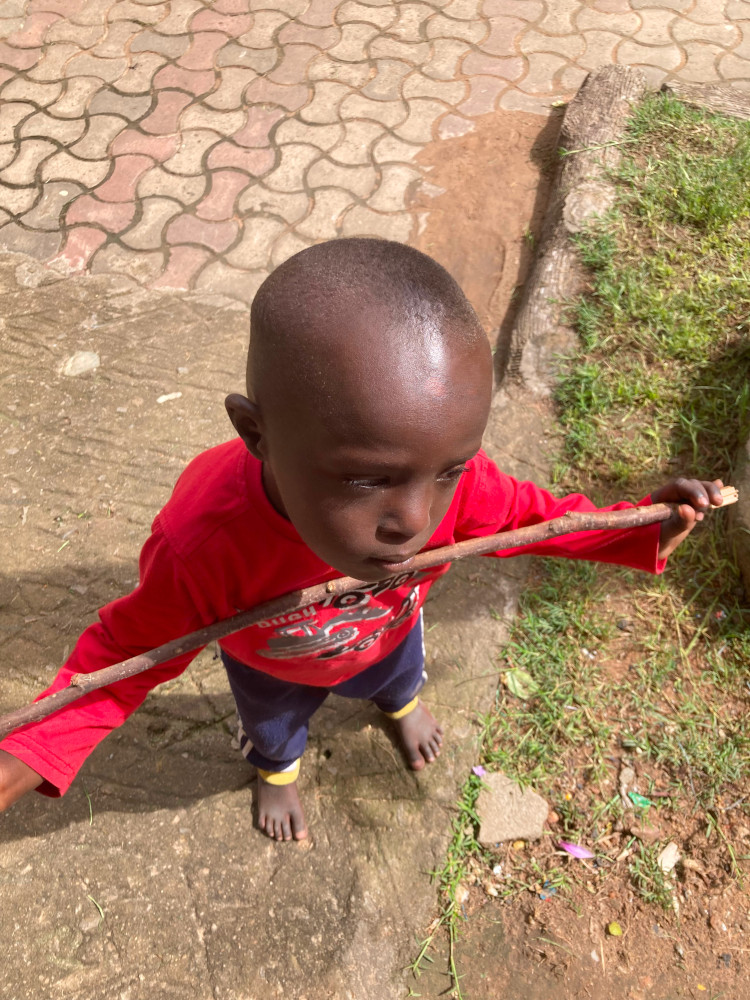
The children were very engaging. Someone, maybe his mother, took the stick away.
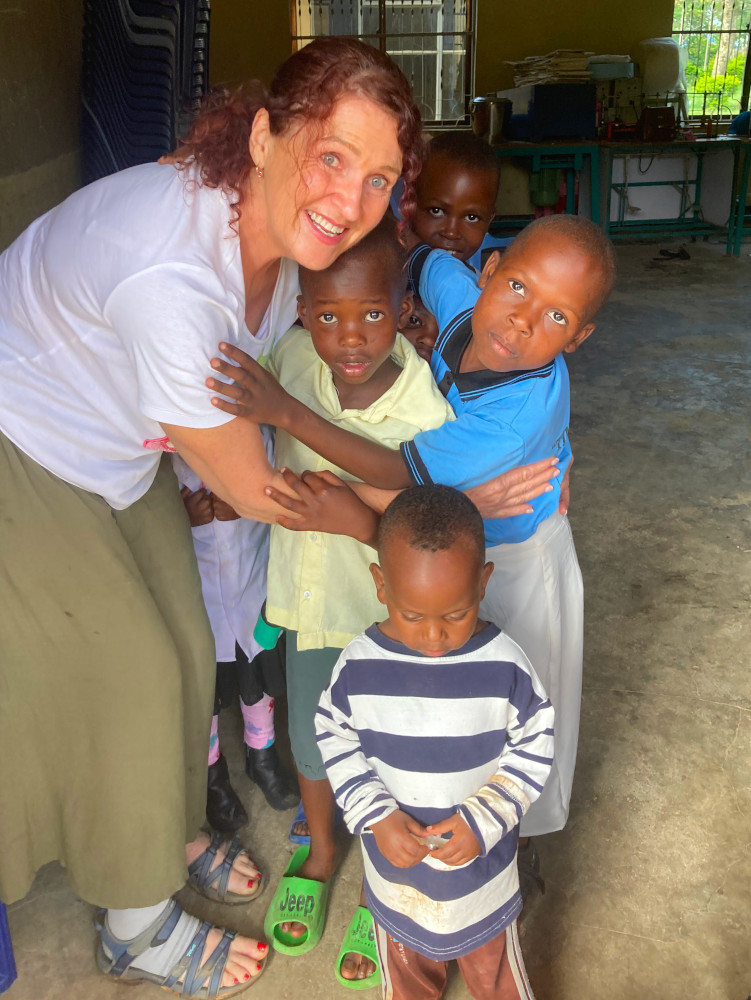
Barbara Stephens who went with me to Garasama church got close to a bunch of the children.
The women, young yet strong, who resist FGM, can flee to the Mugumu Safe House which means they can be sheltered against retaliation. The Churches of Mara Diocese, the Mothers Union and the aid agencies that support it, including Rehema Cafe and Anglican Aid, have changed the future of hundreds of local women. Well done.
Then another long road trip, to Serengaeti, where we became normal tourists for a time. Luckily the Gafcon-tiki tour has a much better photograher than me – drum roll for Michael Charles from Anglican Aid who often was the first person to spot an animal, had the longest lens and could even shoot across the bus and out the window on the other side. The amimal pictures are his.
There was an abundance of Impala, skittish and grouped in “harems” with one adult male and up to 60 females.
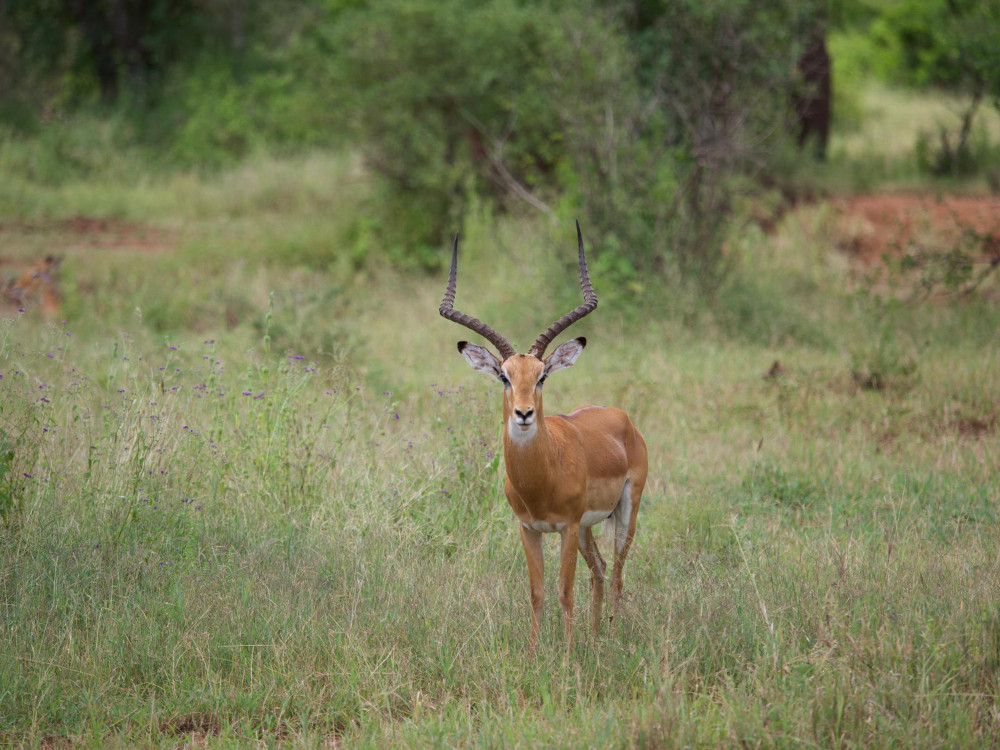
A family of baboons decided to play in a tree right next to the road. They groom each other, parent and child.
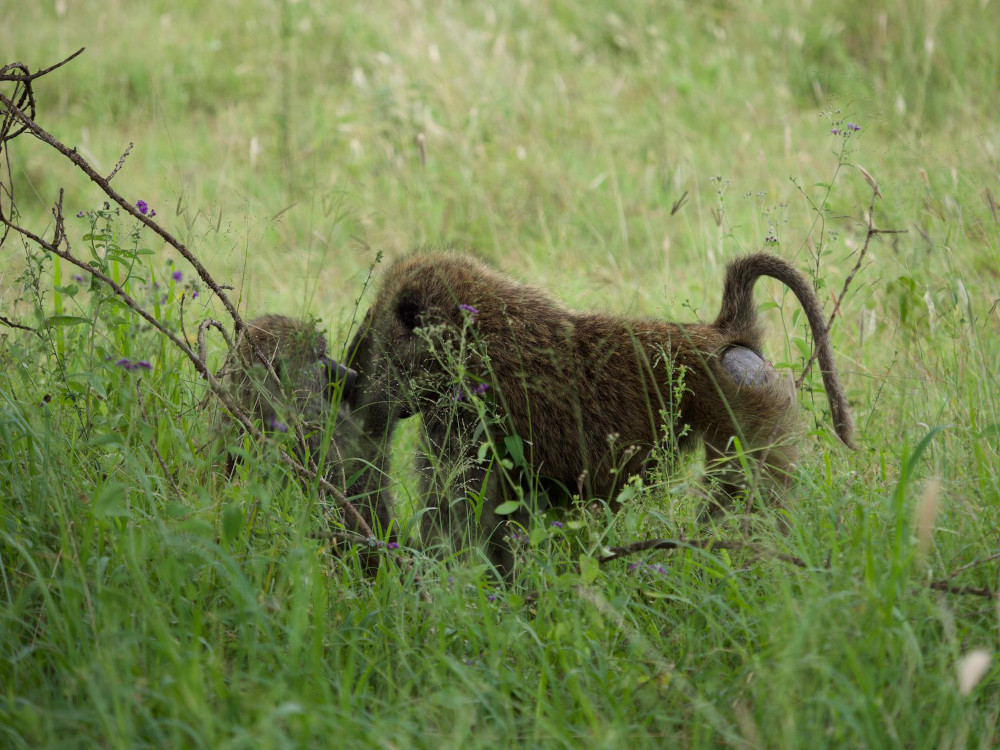
The giraffes were not so co-operative. But Michael captured them especiall wel.


And the Hippos. We had lunch at a place where Hippo love to hang about at. At first it looked like a rock-filled river…. but most of those “rocks” are hippopotami.
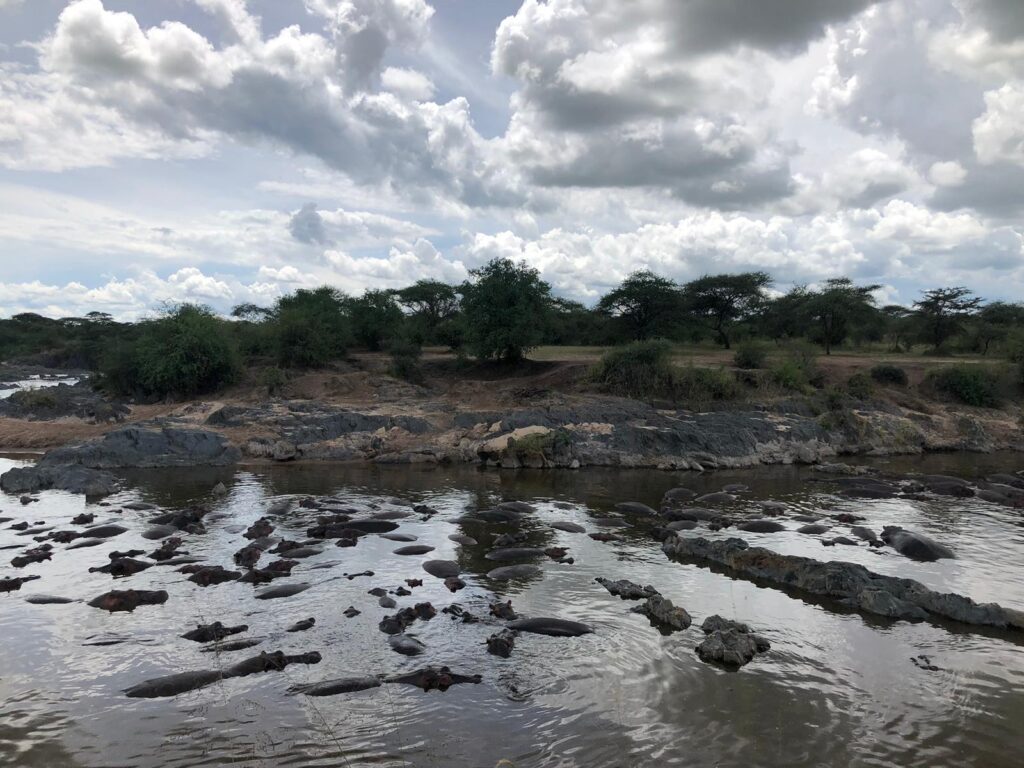
Hey, look what Michael the photographer spotted
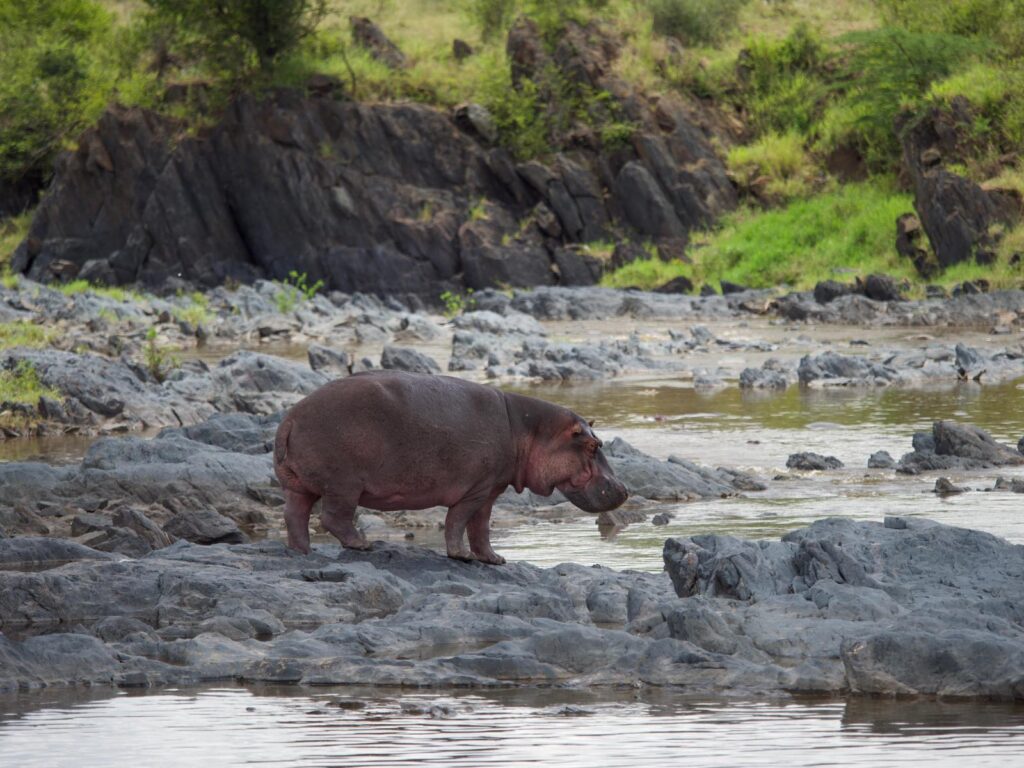
And then the big yawn. The shot several wanted, but was really hard to get. The Hippos move fast when they want to.
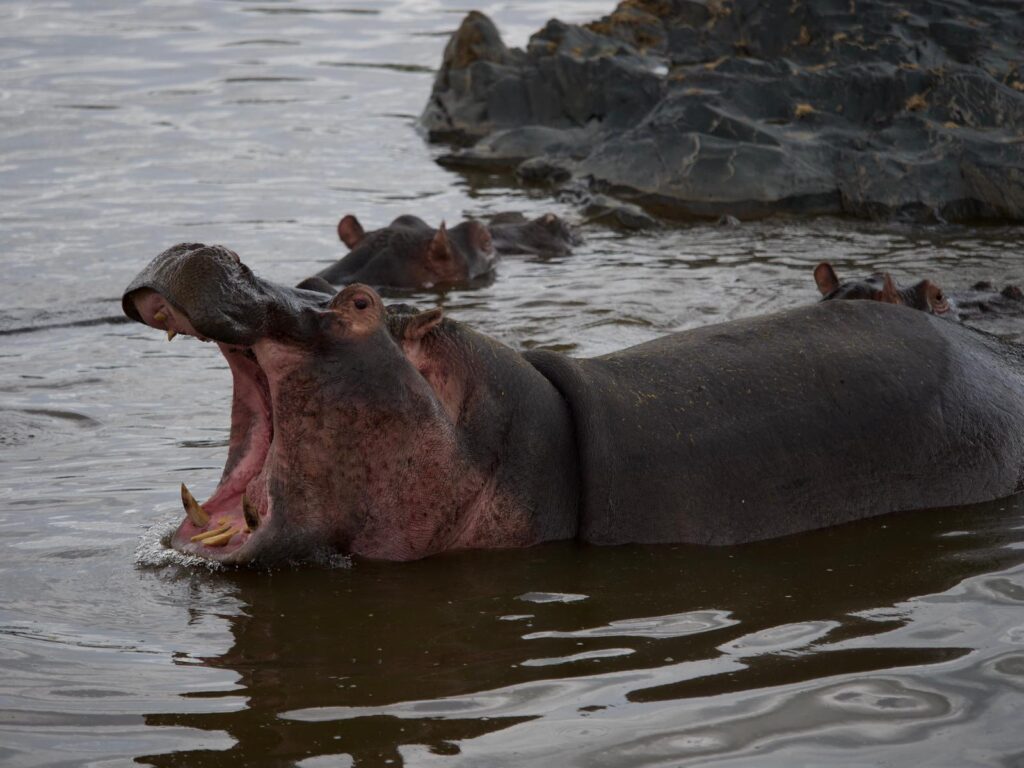
After we left the hippos the rains began. So we missed out on the lions because that road would have been too boggy, and we had a long drive to the town of Bunda where we had a wonderful dinner in the “Strawberry Pink Palace,” built by long serving CMS missionary Helen Hoskins. The house Helen built will be dedicated as the Bishop’s Lodge of Mara diocese tomorrow, by a relaxed-looking archbishop Kaniska Raffel who we’ve caught up with a couple of times.
It was a day of contrasts. The serenity of the Serengeti which preserves the animals we saw, and the sanctuary of the safe house that young women and girls fleeing FGM can go to. Life in the park is of course a struggle between species although we heard of giraffes and baboons warning each other about big cats. And each town we drive through on this trip, with the the main road lined with shantys, people selling produce sometimes in the mud, could be called “struggletown.” As we drove through the rain groups of children walked past in their school uniforms, with no rain gear or umbrellas. They must be so keen to learn.
The tourist Africa and the Africa which puts demands on privileged people who read this blog.
